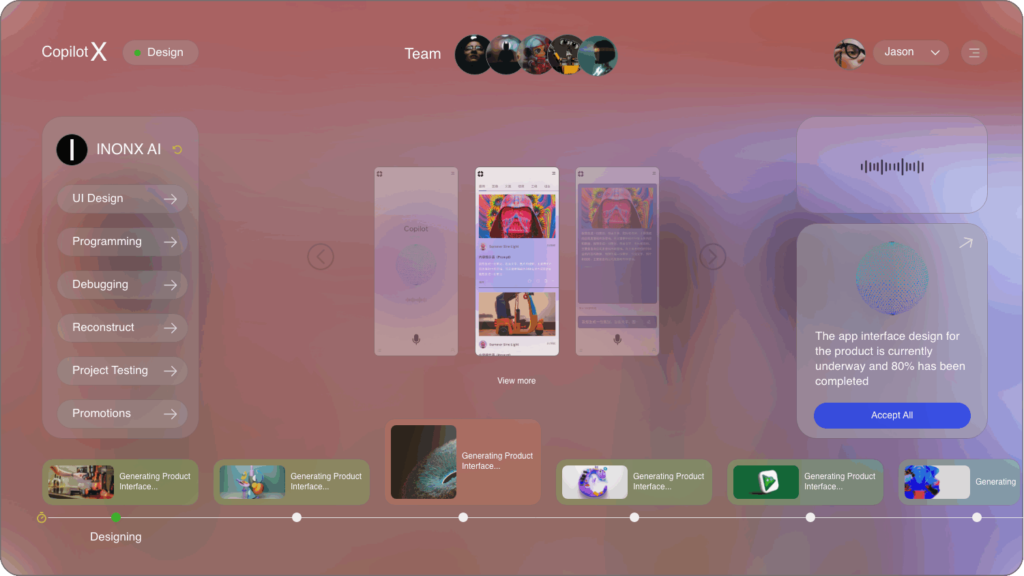Artificial intelligence continues to evolve at a remarkable pace in 2024, with significant advancements in large models, tools, and technologies transforming industries worldwide. Companies like Google and OpenAI have been at the forefront of these developments, launching state-of-the-art models and innovative products that enhance functionalities in various sectors. This article explores the latest AI advancements, focusing on the newly released models, emerging technologies for specialized use cases, and the implications for industries such as healthcare, business automation, and education.
.
**New AI Large Models: Google Gemini 1.5 Pro**
One of the most significant releases this year has been Google Gemini 1.5 Pro. This large model boasts exceptional multimodal capabilities, allowing for more natural interaction with users across different types of content, from text to images and audio. The model’s extended context understanding enables it to process and analyze information more effectively, making it a versatile tool for a vast range of applications. According to Google’s latest analyses, Gemini 1.5 Pro can handle up to 32,000 tokens in context, providing it with a significant advantage when interpreting lengthy documents or multi-part queries (Source: Google AI Blog, 2024).
The multimodal features of Gemini 1.5 Pro can be leveraged for innovative customer feedback analysis across sectors. For instance, businesses can analyze product reviews and social media mentions by combining sentiment analysis with image recognition, enabling a more comprehensive understanding of customer responses. This integration is vital for guiding marketing strategies and product development, allowing companies to make data-driven decisions more effectively.
.
**Cutting-Edge Tools and APIs**
In conjunction with the advancements in AI models, the 2024 landscape has seen the emergence of powerful tools and APIs designed to integrate advanced AI functionalities across various industries. Notably, OpenAI has released a suite of tools under the API umbrella, fostering accessibility for developers and businesses. These APIs allow organizations to automate data analysis, customer service interactions, and personalized recommendations, streamlining operations and enhancing user experiences (Source: OpenAI Developer Portal, 2024).
For example, one of the standout features of these tools is the ability to conduct customer feedback analysis efficiently. Businesses can leverage statistical learning theory to refine their product offerings based on nuanced insights gleaned from consumer data. This method enables entities to understand not only what customers are saying but also the underlying motives and sentiments associated with their feedback. By employing prompt engineering documentation, developers can easily tailor prompts to extract specific insights from data without over-complicating the interaction process.
.
**Emerging Technologies Addressing Specialized Use Cases**
As AI continues to advance, there is an increasing focus on emerging technologies that address specialized use cases, particularly those emphasizing debiasing and reliability. The launch of debiased large language models (LLMs) has been a crucial step in this direction. Many organizations are recognizing the importance of training AI on diverse datasets to mitigate biases that can inadvertently influence outputs (Source: MIT Technology Review, 2024).
These LLMs are being integrated into various applications across sectors. In healthcare, for instance, AI systems are now better equipped to analyze patient data without the skew that previously persisted. This results in more reliable diagnostic tools, allowing clinicians to make better-informed decisions regarding treatment plans. Similarly, businesses are deploying these models in hiring processes to ensure that selection procedures are fairer, aiming to eliminate biases that could lead to ethical concerns.
.
**Innovative AI Products for Enterprise and Cybersecurity**
AI’s impact on enterprises has also ramped up with the introduction of innovative products designed to improve operational efficiencies. For example, companies like Palantir and IBM have rolled out advanced AI-driven analytics platforms that cater specifically to business automation needs (Source: Forrester Research, 2024). These platforms allow organizations to process vast amounts of data smoothly, offering insights that support decision-making processes.
In cybersecurity, AI has emerged as a crucial component in threat detection and response. Novel AI solutions leverage machine learning to analyze network traffic patterns and detect anomalies indicative of potential breaches. FireEye and CrowdStrike have introduced AI systems that not only offer real-time alarms but also incorporate elements of predictive analytics, allowing companies to proactively mitigate threats (Source: cybersecurityreviews.com, 2024).
.
**Transforming Creative Industries**
The creative industries have not been overlooked in AI’s transformative journey. Generative AI tools have shown remarkable promise in areas such as graphic design, music production, and content creation. Tools like Adobe’s Sensei use advanced algorithms to help designers generate unique assets based on user preferences and project specifications, leading to a more fluid creative process (Source: Adobe Blog, 2024).
Furthermore, these AI-driven tools have enhanced functionalities that aid filmmakers and content producers in their work. For instance, AI can generate draft scripts based on thematic outlines or even assist in visual effects production, significantly reducing the time and effort required for complex projects. By utilizing prompt engineering, creators can customize the outputs to reflect their unique voice and style, providing a balance between automation and artistic input.
.
**Impact on Education**
In education, the integration of AI technologies has revolutionized the way students engage with learning materials. Many institutions have adopted intelligent tutoring systems powered by AI to personalize learning experiences. These systems adapt to individual students’ needs, providing tailored resources and feedback that enhance comprehension and retention (Source: Education Week, 2024).
Additionally, advancements in LLMs have led to the development of virtual teaching assistants capable of answering queries and guiding students through complex topics. This integration allows educators to focus more on facilitating discussions and fostering critical thinking, as AI handles routine inquiries. Moreover, by incorporating statistical learning theory into the analysis of student performance data, educational institutions can continuously refine teaching methods and curricular offerings.
.
**Conclusion**
As we advance through 2024, the developments within the artificial intelligence landscape promise to reshape industries dramatically. Newly released large models like Google Gemini 1.5 Pro, alongside innovative tools and specialized technologies, demonstrate AI’s capacity to enhance functionalities and address specific challenges within various sectors. The impact on industries like healthcare, business automation, and education illustrates AI’s potential to create more efficient, equitable, and engaging environments. As organizations continue to harness these advancements, the future of artificial intelligence looks increasingly bright and promising.
**Sources:**
– Google AI Blog, 2024.
– OpenAI Developer Portal, 2024.
– MIT Technology Review, 2024.
– Forrester Research, 2024.
– Cybersecurity Reviews, 2024.
– Adobe Blog, 2024.
– Education Week, 2024.

























